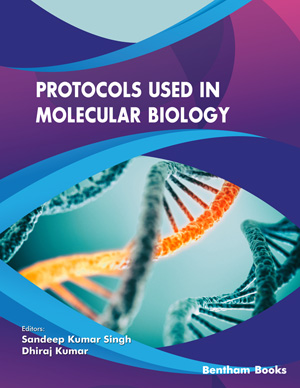A Modified Western Blot Protocol for Enhanced Sensitivity in the Detection of a Tissue Protein

- Authors: Sachchida Nand Rai, Mallikarjuna Rao Gedda, Walia Zahra, Hareram Birla, Saumitra Sen Singh, Payal Singh, Neeraj Tiwari, Rakesh K. Singh, Surya Pratap Singh9
-
View Affiliations Hide Affiliations9 Department of Biochemistry, Institute of Science, Banaras Hindu University, Varanasi, India
- Source: Protocols used in Molecular Biology , pp 35-43
- Publication Date: January 2020
- Language: English
A Modified Western Blot Protocol for Enhanced Sensitivity in the Detection of a Tissue Protein, Page 1 of 1
< Previous page | Next page > /docserver/preview/fulltext/9789811439315/chapter-4-1.gif
Western blots (WB) are designed to investigate protein levels and their patterns of modification in homogenized tissue samples. Although, Western blots are quantifiable, unlike immunohistochemistry, cellular integrity is lost. The availability of antibodies against the protein and their patterns of modification of interest form the basis of both Western blots and Immunohistochemistry. Antibodies can also be directed not only against proteins but against chemical modifications of the proteins too, such as phosphorylation and glycosylation of specific amino acid residues. In Western blotting, the proteins in the sample are denatured, size-separated on a denaturing acrylamide gel, and transferred to a nylon membrane. Antibody paratopes can then bind to the antigenic epitope in the protein present on the nylon membrane. Thus, with the help of a chemiluminescent assay system that darkens X-ray films, the resulting antibody-antigen complex can be visualized. Because of the ubiquitous and relatively inexpensive availability of WB equipment, the quality of WB in publications and following analysis and investigation of the data can be variable, possibly resulting in forged conclusions. This may be because of the poor laboratory technique and/or lack of understanding of the significant steps involved in WB and what quality control procedures should be followed to ensure effective data generation. The present book chapter focuses on providing a detailed description and critique of WB procedures and technicalities, from sample collection through preparation, blotting, and detection, to examination of the data collected. We aim to provide the reader with the improved expertise to decisively carry out, assess, and troubleshoot the WB process, in order to produce reproducible and reliable blots.
-
From This Site
/content/books/9789811439315.chapter-4dcterms_subject,pub_keyword-contentType:Journal -contentType:Figure -contentType:Table -contentType:SupplementaryData105

